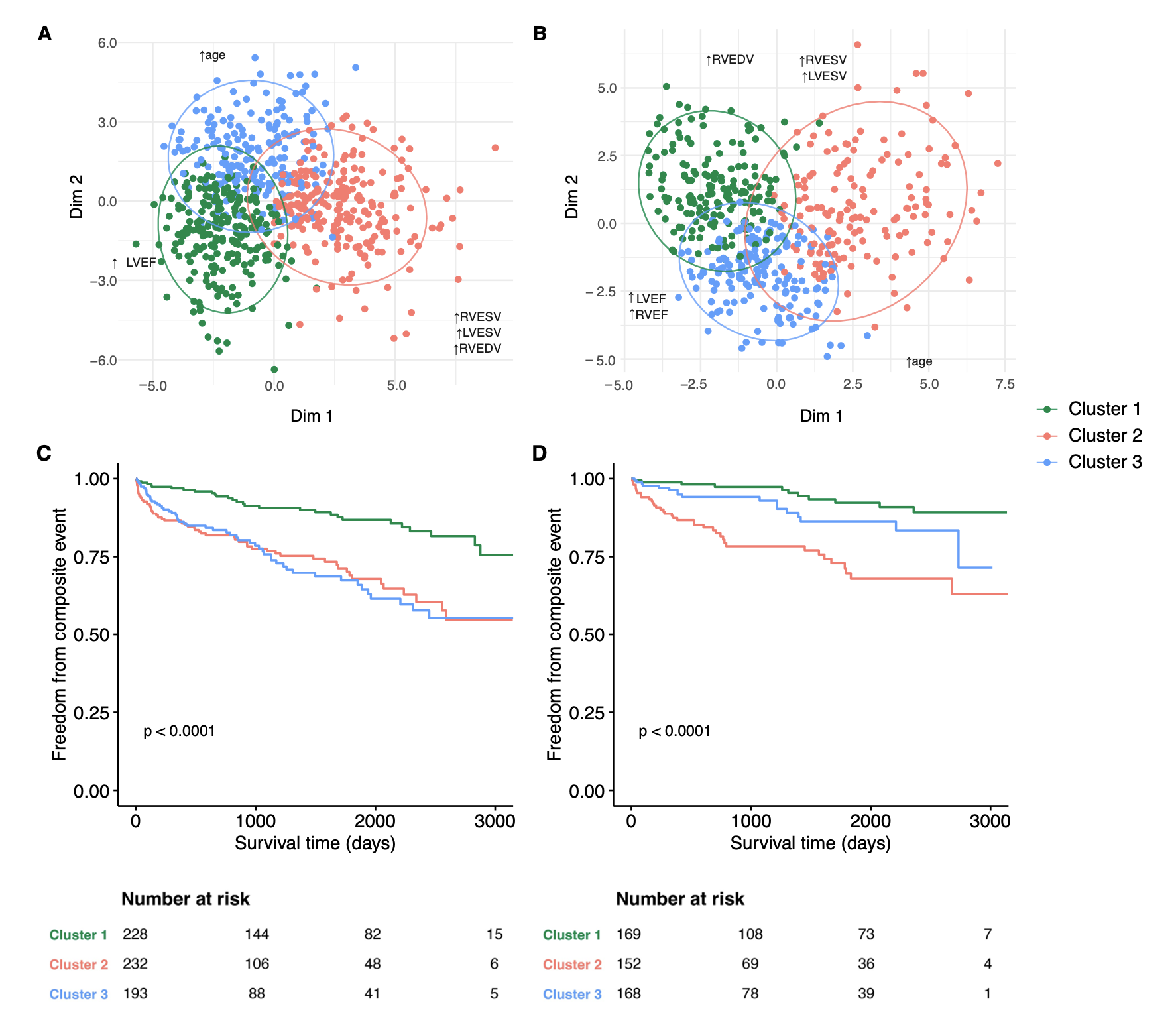Oral Abstract
Unsupervised Phenotypic Clustering in Dilated and Hypokinetic Non-dilated forms of Non-ischemic Cardiomyopathy and Associations with Future Clinical Outcomes
- YW
Yifan Wang, BSc
Medical Student
University of Ottawa, Canada - YW
Yifan Wang, BSc
Medical Student
University of Ottawa, Canada - JT
Justin J. Tse, PhD, MSc, BSc
Research Associate
University of Calgary, Canada 
Ahmed Abdelhaleem, MD
Advanced Cardiac Imaging Fellow
West Virginia University Heart & Vascular Institute- SD
Steven Dykstra, PhD
PhD Student
University of Calgary, Canada - SR
Sandra Rivest, RN
Research Coordinator
Libin Cardiovascular Institute; University of Calgary, Canada - JF
Jacqueline Flewitt, MSc
Manager of Strategic Partnerships
Libin Cardiovascular Institute; University of Calgary, Canada - YF
Yuanchao Feng, PhD
Senior AHS analyst
Libin Cardiovascular Institute; University of Calgary, Canada - AH
Andrew G. Howarth, MD, PhD
Associate Professor
Libin Cardiovascular Institute; University of Calgary, Canada - CL
Carmen P. Lydell, MD
Clinical Associate Professor
Libin Cardiovascular Institute; University of Calgary, Canada - LK
Louis Kolman, MD
Clinical Assistant Professor
Libin Cardiovascular Institute; University of Calgary, Canada - RM
Robert JH Miller, MD
Clinical Assistant Professor
Libin Cardiovascular Institute of Alberta, University of Calgary, Canada - NF
Nowell Fine, MD, MSc
Cardiologist / Associate Professor
Libin Cardiovascular Institute of Alberta, University of Calgary, Canada 
Dina Labib, MD, PhD, FSCMR
Associate Scientific Director, Personalized Diagnostics Program; Adjunct Assistant Professor
University of Calgary, Canada
James A. White, MD
Professor
Libin Cardiovascular Institute; University of Calgary, Canada
Presenting Author(s)
Primary Author(s)
Co-Author(s)
Methods: A total of 1,142 patients with idiopathic NICM were identified from the Cardiovascular Imaging Registry of Calgary (CIROC), defined as a CMR LV EF < 50% in the absence of any identifiable aetiology. Patients were sub-classified as DCM (n=653) and HNDC (n=489) cohorts based on SCMR recommended sex-specific reference ranges for body surface area-indexed LV end-diastolic volume. All patients underwent baseline health questionnaires and standardized reporting (cardioDI, Cohesic Inc., Calgary) at time of CMR and were followed for a minimum of 6 months for the composite outcome of all-cause mortality, survived cardiac arrest, ventricular tachycardia, or hospital admission for heart failure. The Kamila clustering algorithm for mixed-type data (numerical and categorical) was applied to a total of 56 features (15 patient-reported, inclusive of NYHA class, quality of life, socio-demographics, smoking, and alcohol consumption; 19 CMR-derived, inclusive of chamber volumes, regional patterns of late gadolinium enhancement, and fibrosis/scar burden; 16 electronic health records-derived, inclusive of labs and medications; and 6 combined (engineered) features).
Results:
Three clusters were identified for both DCM and HNDC sub-cohorts, each demonstrating unique clinical and CMR characteristics (Tables 1 and 2). In both sub-cohorts, Cluster 1 was younger with mildly reduced LV EF. Cluster 2 exhibited worse clinical symptoms, higher loop diuretic usage, and severe LV systolic dysfunction with high fibrosis/scar burden. Cluster 3 was older with higher prevalence of comorbidities and moderate systolic dysfunction. In HNDC, Cluster 2 experienced a 4.7-fold increased risk of the composite outcome versus Cluster 1 (Figure 1; HR [95% CI] 4.7 [2.4-9.2]; p< 0.001), where-as a trend towards worse outcomes was observed for Cluster 3 (HR 2.0 [0.9-4.3]; p=0.07). In DCM, both Clusters 2 and 3 experienced a 2.8-fold increased risk of the outcome versus Cluster 1 (HR for each 2.8 [1.8-4.4]; p< 0.001).
Conclusion: Unsupervised phenotype clustering identifies high risk patients across both DCM and HNDC forms of NICM. This novel approach has the potential to improve capacity for the delivery of personalized care in patients with NICM.
Visualization of phenotype clusters in both the (A) Dilated cardiomyopathy (DCM) cohort and (B) Hypokinetic non-dilated cardiomyopathy (HNDC) cohort using factor analysis of mixed data (FAMD); Kaplan-Meier curves for freedom from composite outcome in both (C) DCM and (D) HNDC cohorts are shown based on cluster membership.

